Forget Khat Jawi – Vietnam The Top Producer Of Programmers, Even Myanmar Has Started Computer Coding For Kids.
 |
Ho Chi Minh city |
As far back as 1988, the then-Education Minister Anwar Ibrahim announced that computer skills and programming would be part of the country’s curriculum by 1990. It was the period where the Internet had yet to exist and now-obsolete 5.25 inch floppy disk with a capacity of only 1.2-Megabyte ruled the land. Anyone with knowledge of Microsoft Word and Excel was considered a genius.
The IT (information technology or computer science) industry and education sector were absolutely excited. Parents who could afford would splash hard-earned money for their children to learn Microsoft Word, Excel and PowerPoint. Teachers were supposed to be trained, but very few got the opportunity. The education ministry’s ambitious plan was merely hot air.
About 10 years later in 1998, corporate email systems would use a dial-up modem to receive and send emails at speed of a mind-boggling 9.6 Kbit/s (that’s kilobit per second). But Anwar’s computer programming policy never materialised. The best thing that ever happened to school was the 1BestariNetproject, which the Malaysian government launched in 2012.
Laptops for every child and Internet connectivity for every one of the nation’s 10,000 schools were promised. The project was awarded to YTL and the government had splashed RM248 million for the purchase of 116,399 units of Chromebooks. YTL laughed all the way to the bank when they charged RM2,130 for each Chromebook when the retail price was merely RM999 a pop.
On average, each of the 10,000 schools was supposed to get 10 Chromebooks. But there were none. Somebody had quietly stolen the laptops. The 1BestariNet project also included the use of the “Frog Virtual Learning Environment (Frog VLE)” for teachers, students and even their parents. Until today, students continue to be tortured with the Frog’s performance.
It was reported that Google engineer Neil Fraser was surprised when he visited Vietnam to see how schools there teach ICT, only to discover that kids in the 11th grade are capable of passing the Chocolate Factory’s notoriously difficult interview process. In Vietnam, computer classes start in Grade 2 (age 7-8) where they learn the basics such as how to take care of floppy disks.
By grade 3 (age 8-9), Vietnamese students learn how to use Microsoft Windows XP. And by grade 4 (age 9-10), they would start programming in Logo with a sequence of commands follows by loops. They would start writing procedures containing loops calling procedures which contain loops by Grade 5 (age 10-11). So, what’s the big deal here?
It’s a big deal because by comparison, at San Francisco’s magnet school for science and technology (Galileo Academy) 11th and 12th grade students would struggle with HTML’s image tag, while loops and conditionals were “poorly understood”. Now do you understand why Vietnam has produced the most top programmers in the region, if not the world?
Back in 2014, we published (read here) how incubators in Hanoi and Ho Chi Minh City successfully produced at least 10 startups with over 1-million users, delivering a humiliation to Malaysia whose Multimedia Super Corridor (MSC) was once an admiration in the 1990s. Even renowned Singapore-based tech startups such as Grab, Garena, HonestBee have been recruiting engineers from Vietnam to work in Singapore.
It was the first STEM programme for students of government schools in Myanmar. The school, which is Myanmar’s largest, has 7,200 students, of which 380 students joined the event. Headmaster Dr Moe Thu said – “Computer programming is a part of STEM. That’s why I try to introduce this kind of special training for my students, even though we cannot have the whole curriculum for STEM.”
It’s quite hilarious when PM Mahathir Mohamad, after calling Malaysians to learn from the Japanese and the mainland Chinese, has recently urged young people to go to Turkey and find work there for 10 years so that they can help develop Malaysia on their return. Does Malaysians really need to go as far as Japan, China or Turkey to learn the basic formula of success?
About 10 years later in 1998, corporate email systems would use a dial-up modem to receive and send emails at speed of a mind-boggling 9.6 Kbit/s (that’s kilobit per second). But Anwar’s computer programming policy never materialised. The best thing that ever happened to school was the 1BestariNetproject, which the Malaysian government launched in 2012.
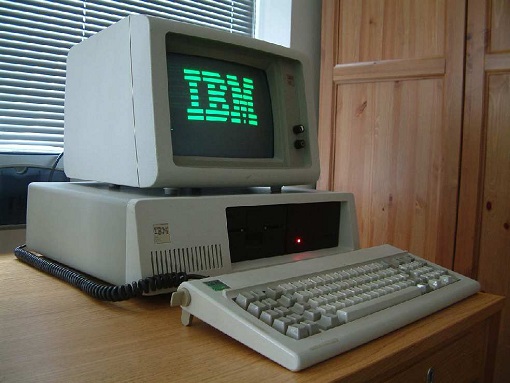 |
On average, each of the 10,000 schools was supposed to get 10 Chromebooks. But there were none. Somebody had quietly stolen the laptops. The 1BestariNet project also included the use of the “Frog Virtual Learning Environment (Frog VLE)” for teachers, students and even their parents. Until today, students continue to be tortured with the Frog’s performance.
Last month, YTL claimed it has invested more than RM4 billion in building up the infrastructure in schools for a 15-year project for the Frog VLE. However, the fact remains that the architecture of the virtual learning system was so inferior that both its connectivity and contents are like 20 years ago. The contents are merely quiz and assignments.
In 2016, four years after the rip-off 1BestariNet project was introduced, Malaysian students and schools were shocked again with another piece of news that computer coding would be added to the syllabuses of national schools – scheduled to start in 2017, almost 30 years since Anwar Ibrahim told all and sundry about the same idea.
In line with the Malaysia Education Blueprint 2013-2025, the then Malaysian Digital Economy Corporation (MDEC) CEO Yasmin Mahmood proudly announced – “We will be launching this thing called the digital maker movement next month, where coding is embedded as an official curriculum in schools,starting from standard three onwards.”
As expected, the year 2017 came and went and the sexy policy of MDEC, supposedly the national ICT custodian, too had quietly been abandoned. Today, even after the previous corrupt and the incompetent Barisan Nasional government has been toppled, there is no sight of any basic computer programming or coding that would finally be introduced.
Instead, Mr. Maszlee Malik, the first education minister under the new government of Pakatan Harapan, has shown great interest in black shoes and “Khat Jawi” writing as a formula to leapfrog students’ performance to the next level. Yes, more than 30 years since Anwar proposed computer programming to move forward, Maszlee has taken two steps backward.
Apple’s legendary Steve Jobs famously said in 2012 – “Everybody should learn to program a computer, because it teaches you how to think.” A single and simple line of code – “print (‘Hello, world!’)” – can actually teach a child to see more meaning and develop their critical thinking skills than wearing a pair of black shoes or writing Arabic “Khat Jawi” in school.
 |
In line with the Malaysia Education Blueprint 2013-2025, the then Malaysian Digital Economy Corporation (MDEC) CEO Yasmin Mahmood proudly announced – “We will be launching this thing called the digital maker movement next month, where coding is embedded as an official curriculum in schools,starting from standard three onwards.”
As expected, the year 2017 came and went and the sexy policy of MDEC, supposedly the national ICT custodian, too had quietly been abandoned. Today, even after the previous corrupt and the incompetent Barisan Nasional government has been toppled, there is no sight of any basic computer programming or coding that would finally be introduced.
 |
Apple’s legendary Steve Jobs famously said in 2012 – “Everybody should learn to program a computer, because it teaches you how to think.” A single and simple line of code – “print (‘Hello, world!’)” – can actually teach a child to see more meaning and develop their critical thinking skills than wearing a pair of black shoes or writing Arabic “Khat Jawi” in school.
Of course, Prime Minister Mahathir Mohamad can choose to continue protecting his boy Maszlee as the clueless education minister plays his silly toys. But the world does not revolve around Malaysia. As the country’s education system continues to be politicised, neighbouring countries once laughed at by Malaysia for their backwardness is progressing at stunning speed.
Last month (July), Singapore government announced that all upper primary students (Primary 4 to 6) will attend compulsory coding enrichment classes from next year onwards. Called “Code for Fun”, the 10-hour programme will actually start at some schools later this year – with Primary 6 students going for lessons after the Primary School Leaving Examinations (PSLE).
 |
The programme, with an objective to expose students to basic computer coding, was piloted in 2014 as an optional enrichment programme for primary and secondary school students to learn computational thinking, coding concepts and problem-based learning, not to mention emerging technologies such as AI (artificial intelligence) to help Singaporeans in the digital transformation journey.
But Singapore, Malaysia’s closest neighbour, isn’t the only country in Southeast Asia that is extremely eager to produce students who could pick up problem-solving skills and learn how to think and come up with “logical and thorough” solutions. As far back as 2013, Vietnam’s prowess in computer programming had shocked the world.
But Singapore, Malaysia’s closest neighbour, isn’t the only country in Southeast Asia that is extremely eager to produce students who could pick up problem-solving skills and learn how to think and come up with “logical and thorough” solutions. As far back as 2013, Vietnam’s prowess in computer programming had shocked the world.
 |
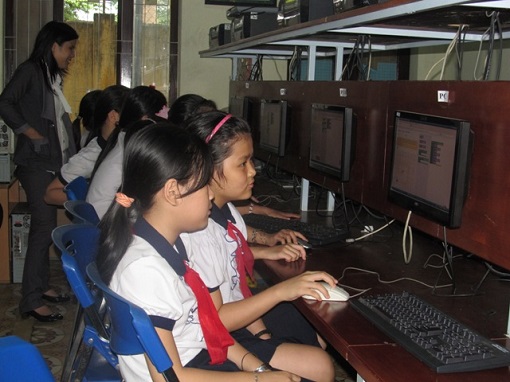 |
in Australia the best IT and computer specialists are Vietnamese Aussies and I have personally worked with several |
It was reported that Google engineer Neil Fraser was surprised when he visited Vietnam to see how schools there teach ICT, only to discover that kids in the 11th grade are capable of passing the Chocolate Factory’s notoriously difficult interview process. In Vietnam, computer classes start in Grade 2 (age 7-8) where they learn the basics such as how to take care of floppy disks.
By grade 3 (age 8-9), Vietnamese students learn how to use Microsoft Windows XP. And by grade 4 (age 9-10), they would start programming in Logo with a sequence of commands follows by loops. They would start writing procedures containing loops calling procedures which contain loops by Grade 5 (age 10-11). So, what’s the big deal here?
It’s a big deal because by comparison, at San Francisco’s magnet school for science and technology (Galileo Academy) 11th and 12th grade students would struggle with HTML’s image tag, while loops and conditionals were “poorly understood”. Now do you understand why Vietnam has produced the most top programmers in the region, if not the world?
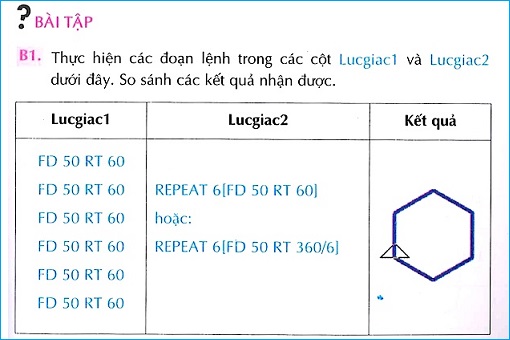 |
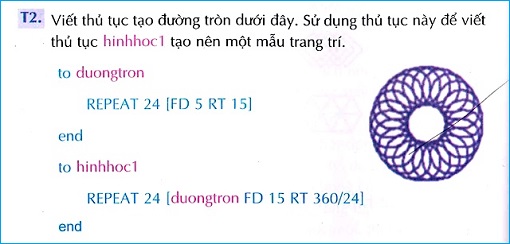 |
In spite of the U.S. being the hub of technology and Malaysia being the pioneer of the so-called MSC, Vietnamese kids clearly possess more technology knowledge. Vietnamese students might be so poor that they had to burn CD due to lack of educational software, but their passion and exposure to computer coding allows the country to produce 40,000 graduates in computer programming every year.
But being poor isn’t an excuse not to excel in the “STEM fields” – science, technology, engineering and mathematics. Early in 2018, a global movement of computer programming for children – “Hour-of-Code” – was introduced by the Myanmar STEM Education Association (MSEA) at the Practicing High School of Yangon University of Education in Kamayut township of Yangon.
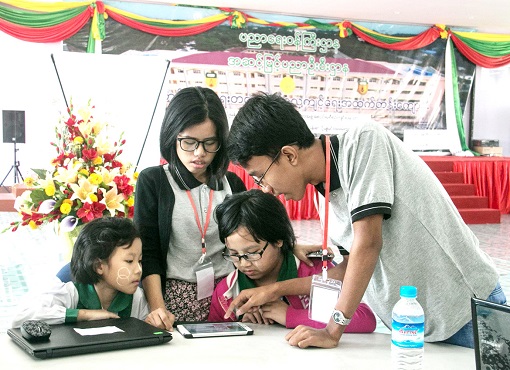 |
Apparently, Dr Moe Thu was inspired to make the training of computer programming for children when she attended a competition event of ASEAN students for STEM in Vietnam in 2017. The biggest challenge, however, was the language barrier for Burmese-speaking children. But the teachers were more than willing to explain the coding vocabulary to the students.
So, don’t be surprised when Vietnam, and even Myanmar, become more progress and developed than Malaysia one day. It’s not an exaggeration to say that Vietnam is already on its way to become the next IT hub, at least in the region, if not Asia or the world. And don’t be surprised if Malaysia ends up becoming the hub for a different business – exporting maids to neighbouring countries.
 |
The 94-year-old premier can easily learn from neighbouring Vietnamese and Burmese about the values of hardworking and their thirst for knowledge. Perhaps he should send Education Minister Maszlee to Vietnam to find out the reasons the nation emerges as a computer coding powerhouse. But Mr. Maszlee should not be surprised to find out that writing Khat or Jawi is not one of them.

Look at India better: the CEOs of Microsoft (Sundar Pitchai, Indian Institute of Technology, Kharagpur) and Google (Satya Nadela, Manipal Institute of Technology) are products of Indian education system.
ReplyDeleteMalaysians to be proud of include Tan Hock Eng, CEO of Broadcom, 2017 highest CEO salary of USD 103 million. Penang now hard at work trying to get him to invest in his home state
Pua Khein Seng, a product of UEC education system, a diploma Maszlee and Toonsie refuses to recognise....so we lost him to Taiwan after he graduated from high school...
QUOTE
'Father of pen drive’ now a Datuk
Tuesday, 17 Jul 2012
By KOW KWAN YEE
GEORGE TOWN: Pen drive inventor Pua Khein Seng was beaming with joy after being conferred the Darjah Setia Pangkuan Negeri (DSPN) award which carries the title Datuk.
“I was informed last week that I would be receiving the award. It was surprising news for me,” said Pua, who is CEO of Taiwan-based Phison Engineering Corp.
The 38-year-old Malaysian, who is popularly known as K.S. Pua, invented the pen drive when he was only 27. The father of three is even regarded as the “father of the pen drive” in Malaysia.
“I want to share this award with all Chinese-educated students who pursue their studies overseas.
“They must put more effort and strive harder. They must also be humble,” he said yesterday.
Pua, who hails from Sekinchan, Selangor, said the recognition was a form of encouragement for Malaysian talents to return and contribute to the country's development.
The former Pin Hwa High School student left Malaysia at the age of 19 to pursue his degree in electrical and control engineering at Chiao Tung University in Taiwan.
UNQUOTE
mahathir very outdated. he must go after the two yrs promised. n bring all the parasites along.
ReplyDelete